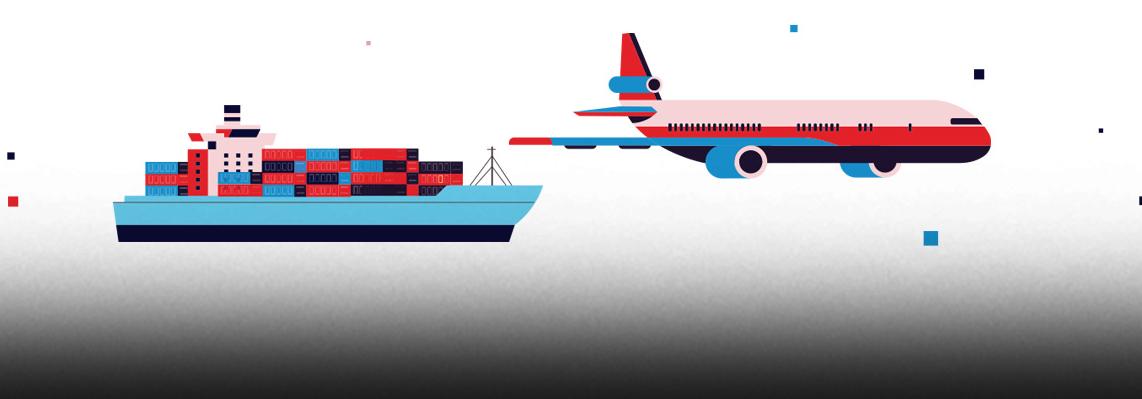Procurement professionals are under pressure as never before. Supply chains have been disrupted and suppliers have gone out of business. So how can you make your MRO supply chain resilient against future shocks?
COVID-19 has created supply-chain nightmares that no one foresaw. From closed borders to soaring freight costs, the pandemic has forced procurement professionals to rethink many assumptions that have driven supply-chain development in recent years.
Take just-in-time delivery, for example. The pandemic has ruthlessly exposed its vulnerability to supplier failures. But at the same time, the economic effects of the crisis mean buffer stocks are a luxury few can afford.
So, how can you future-proof your supply chain against the next crisis?
For a start, it’s important to avoid the temptation to diversify your supplier base for Maintenance, Repair and Operations (MRO). The key is to use a core group of suppliers you trust and know will deliver. In fact, supplier rationalisation is by far the most popular procurement efficiency strategy in the 2020 Indirect Procurement report by RS Components, in partnership with the Chartered Institute of Procurement & Supply (CIPS).
“There’s clearly pressure to rationalise suppliers. It’s a good idea and it should be done but I honestly think that this point in time is about resilience in the supply chain, rather than rationalisation,” says Dr John Glen, CIPS Economist and Visiting Fellow at the Cranfield School of Management.
“It’s a kind of long-term project, but in the next 6 to 18 months it’s about managing resilience and risk in that supply chain, and the rationalisation is going on in the background.”
“When something like this happens, you need to be sure that what you do won’t cause long-term damage. What can you do that you can sustain for a period of time and in a transparent way that the organisation understands?”David Loseby, Group Chief Purchasing Officer, Rolls-Royce
Look before you leap
When MRO supply chains come under pressure, it’s important to act quickly to keep production rolling. But it’s also vital to think through the consequences of emergency actions, says David Loseby, Group Chief Purchasing Officer at aeroengine maker Rolls-Royce.
“When something like this happens, you need to be sure that what you do won’t cause long-term damage. What can you do that you can sustain for a period of time and in a transparent way that the organisation understands?” he says.
If you take a very simplistic lens – has spend gone up or gone down, for example – you risk getting it wrong, he warns.
In a world of lean supply chains, Loseby says it’s important not to simply switch off a supplier, but to develop an agile supply chain that allows you to respond as circumstances change. “The reality is that you simply can’t hold millions of pounds’ worth of buffer stocks,” he adds.
Both Glen and Loseby agree that efficiency and resilience are not incompatible. Using eProcurement and Vendor Managed Inventory (VMI) solutions, supplied by a trusted and stable procurement partner, can help to future-proof your supply chain.
The 2020 Indirect Procurement report found that almost one-third of UK companies already use eProcurement to improve efficiency in indirect MRO procurement. Bin stock and managed stores were the most popular vendor-managed solutions.
It’s a mistake to think that supply-chain resilience is just about what comes into your business. Unless you have visibility about what you are using, you cannot plan the supply side of the procurement operation effectively.
“If businesses adopt a more mature approach and consolidate vendors, they’ll find that they’ll be able to have access to much richer data and solutions that can help them make sure they’ve got the right inventory.”Alex Davies, Head of Value-Added Services Delivery for EMEA, RS Components
“It’s very common for businesses that are multi-site to have little visibility of inventory,” says Alex Davies, Head of Value-Added Services Delivery for EMEA at RS Components.
“It comes down to quality of data,” he says. “It’s about the systems they’ve got and how they work with their suppliers. If they’ve got a fragmented supply base and they use lots of people to buy their MRO, chances are the quality of the data they can access will be poor.
“If they adopt a more mature approach and consolidate with a vendor like RS, they’ll find that they’ll be able to have access to much richer data and solutions that can help them make sure they’ve got the right inventory.”
Sustainable and ethical
The 2020 Indirect Procurement report found that, although reducing costs remains the priority, sustainable and ethical procurement and continuity planning for critical parts were the top strategies that companies had in place for MRO supplies.
“Achieving these goals means working with trusted partners, aligned to mutual objectives. It is essential that procurement is involved in setting the sustainability agenda, and the roadmap including policies, processes and governance that will bring it to life,” says Kate Davies, Head of Global Commercial Services.
“Ethical sourcing is an ever-increasing priority for boards, shareholders and customers alike,” she says. “The key is recognising procurement as a key change agent able to challenge the status quo and elevate ethical sourcing principles in the sourcing business process.”
Very few procurement teams will get extra headcount to manage sustainability in the supply chain. So, it makes sense to free up time by using solutions like VMI and eProcurement, says Alex Davies.
It all adds up to a simple conclusion: the resilience of your supply chain depends on the quality, reliability and knowledge of your suppliers. Which is why it’s so important to work with the right MRO procurement partner to future-proof your supply chain.
For in-depth data and analysis on how COVID-19 has impacted indirect procurement, download the 2020 Indirect Procurement Report here.





